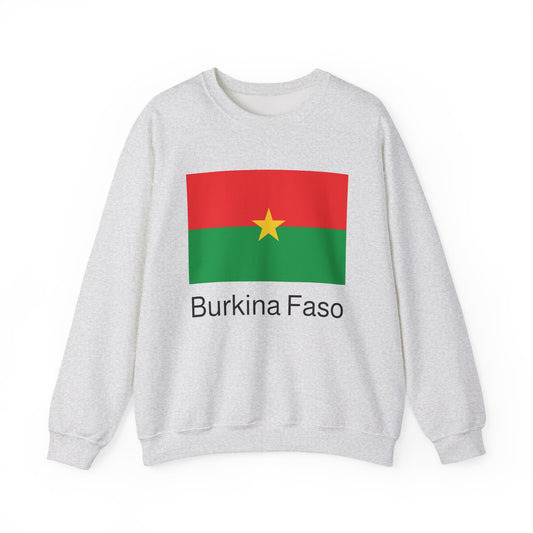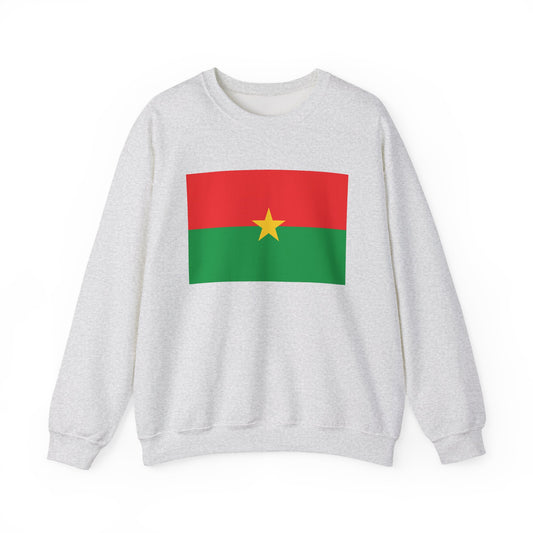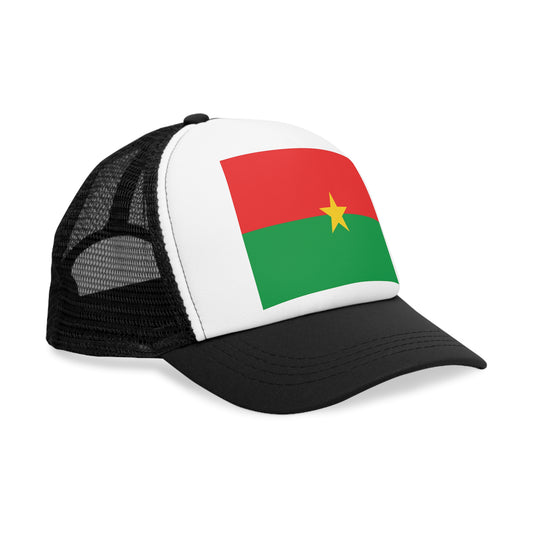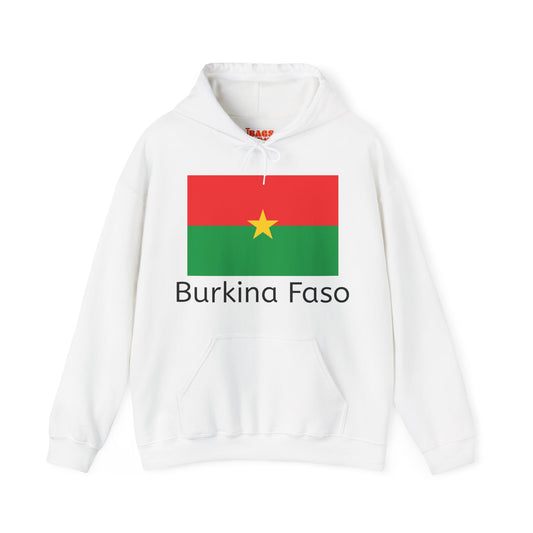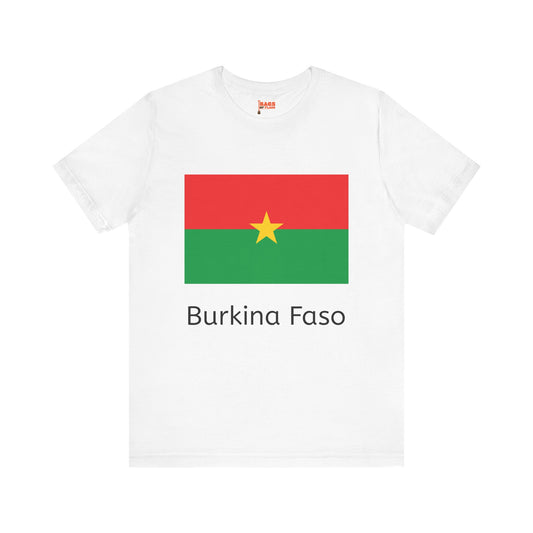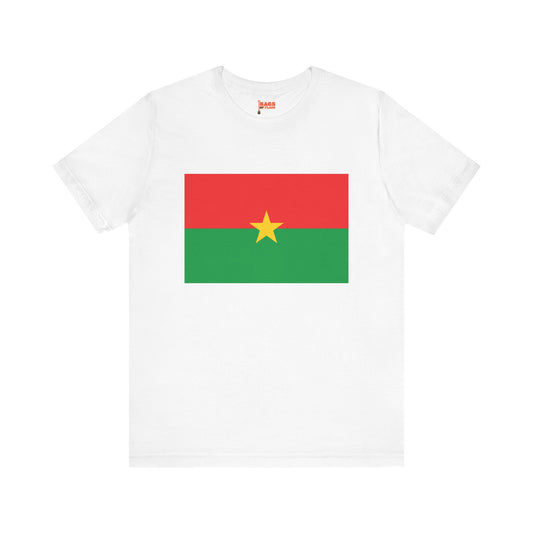-
Burkina Faso Pillow
Regular price $22.65 USDRegular priceUnit price / per -
Burkina Faso Backpack
Regular price $59.79 USDRegular priceUnit price / per -
Burkina Faso Leather Patch Hat
Regular price $18.85 USDRegular priceUnit price / per -
Burkina Faso Sweatshirt
Regular price $34.15 USDRegular priceUnit price / per -
Burkina Faso Flag Sweatshirt
Regular price $34.15 USDRegular priceUnit price / per -
Burkina Faso Mug
Regular price $11.65 USDRegular priceUnit price / per -
Burkina Faso Trucker Cap
Regular price $14.90 USDRegular priceUnit price / per -
Burkina Faso Hoodies
Regular price $34.40 USDRegular priceUnit price / per -
Burkina Faso T-shirts
Regular price $22.79 USDRegular priceUnit price / per -
Burkina Faso Flag Hoodies
Regular price $34.40 USDRegular priceUnit price / per -
Burkina Faso Flag on T-shirt
Regular price $22.79 USDRegular priceUnit price / per
Collection: Burkina Faso
The Burkina Faso flag symbolizes pride and unity for the people of this West African country. With its vibrant colors and unique design, the flag holds a special place in the hearts of Burkina Faso citizens. We will explore the remarkable journey of the Burkina Faso flag, including its design, historical context, symbolism, current relevance, and additional facts and protocols.
Overview of the Burkina Faso Flag

The national flag of Burkina Faso is distinguished by its simple yet profound design. It features two horizontal bands of red above green, bisected by a yellow five-pointed star in the center. This configuration is not just visually striking; it is laden with meaning. The upper red stripe symbolizes the country’s revolutionary spirit and the sacrifices made for independence. Beneath it, the green stripe reflects the nation’s abundant natural resources and agricultural backbone, highlighting the importance of the land to the country’s identity and economy.
At the heart of the flag, the yellow star shines as a beacon of hope and guidance, illuminating the path toward unity and progress. This flag, adopted in the mid-1980s, encapsulates Burkina Faso's aspirations and values, presenting a vivid narrative of its journey toward sovereignty and self-determination. Through its colors and symbols, the flag narrates a story of struggle, resilience, and optimism, making it a potent national emblem.
Historical Context of the Flag

The Burkina Faso flag, adopted on August 4, 1984, marks a pivotal chapter in the nation's history, symbolizing a break from its colonial past and a step towards forging its identity. This change came during a period of intense transformation under the leadership of Thomas Sankara, a revolutionary figure who sought to redefine the country's direction. Sankara's influence extended to the creation of the flag itself, reflecting his vision for a Burkina Faso grounded in self-reliance, unity, and progress.
The adoption of the flag coincided with the country's renaming from Upper Volta to Burkina Faso, which means "the land of upright people" in Mòoré and Dioula, the local languages. This period was characterized by significant social, economic, and political reforms aimed at empowering the population and distancing the nation from neo-colonial influences. The flag, therefore, is not merely a national symbol but a representation of a transformative era in Burkina Faso's history, embodying the aspirations and ideals of its people during a time of revolutionary change.
Symbolism Behind the Flag
At the core of the Burkina Faso flag’s design lies profound symbolism that resonates deeply with the nation's ideals and aspirations. Each color and the central emblem—the yellow five-pointed star—carry significant meanings that reflect the country's history and vision for the future. The red stripe, positioned at the top, is a powerful reminder of the courage and sacrifice of those who fought for the country's independence. It evokes the spirit of bravery and the blood of martyrs, underscoring the importance of liberty and the cost at which it was achieved.
Beneath the red, the green stripe celebrates Burkina Faso’s rich natural endowments and agricultural heritage, symbolizing hope, growth, and the prosperity that comes from the land. It highlights the country’s reliance on its fertile soil and the critical role of agriculture in sustaining the economy and feeding the population.
Central to the flag, the yellow star is a guiding light for the nation, symbolizing its bright future and the unity required to reach it. It stands for the light of the revolution, guiding Burkina Faso’s people towards unity, progress, and a harmonious existence, transcending ethnic and cultural differences.
These elements encapsulate the resilience, unity, and forward-looking optimism that characterize Burkina Faso, weaving a narrative of struggle, renewal, and aspiration.
Current Relevance of the Flag
Today, the flag of Burkina Faso holds a prominent place in the hearts of its citizens. It is a staple at significant national occasions, proudly flown during Independence Day celebrations, commemorated every August 4th, and observed at military ceremonies that honor the country's armed forces. Its presence in educational institutions fosters a sense of patriotism among the younger generations. At the same time, government buildings display the flag as a constant reminder of the nation's sovereignty and the collective responsibilities of its people.
However, the flag has also sparked conversations about its inclusivity and whether it fully represents Burkina Faso's diverse cultural landscape. This dialogue reflects the evolving nature of national symbols and their ability to unify a varied populace. As Burkina Faso continues to navigate its international path and address internal challenges, the flag remains a powerful emblem of the country’s enduring spirit and aspirations for peace, unity, and prosperity.
Additional Facts and Protocols
The flag of Burkina Faso, emblematic of the nation's identity and principles, is subject to specific protocols that ensure its respectful display and handling. Paramount among these is the stipulation that the flag must never make contact with the ground, a common practice with national flags that signifies respect and honor. In any setting where the flag is flown or displayed, meticulous care is taken to maintain its dignity, aligning with the profound respect Burkina Faso's people have for their national symbol.
In terms of positioning, the correct protocol demands that the flag be hoisted with the red stripe positioned above the green, ensuring the flag's design is presented as intended. This proper orientation is crucial for maintaining the flag's symbolism and ensuring it is universally recognized and respected.
Another unique aspect of the Burkina Faso flag’s protocols involves its representation alongside other national flags. In such arrangements, it is important to ensure that all flags are displayed at equal height and given equivalent prominence, reflecting the principles of sovereignty and mutual respect among nations.
Interestingly, while the flag's design is simple, its distinct colors and emblem make it one of Africa’s most distinguishable flags. This recognizability has played a crucial role in fostering national pride among Burkina Faso's citizens.
Despite being a relatively new addition to the country’s national symbols, having been adopted in the mid-1980s, the flag has swiftly become a central emblem of unity, reflecting the resilience and aspirations of the Burkinabe people. These protocols and practices surrounding the flag's display further embed it in the nation's consciousness, symbolizing a continuing commitment to the values and ideals it represents.








